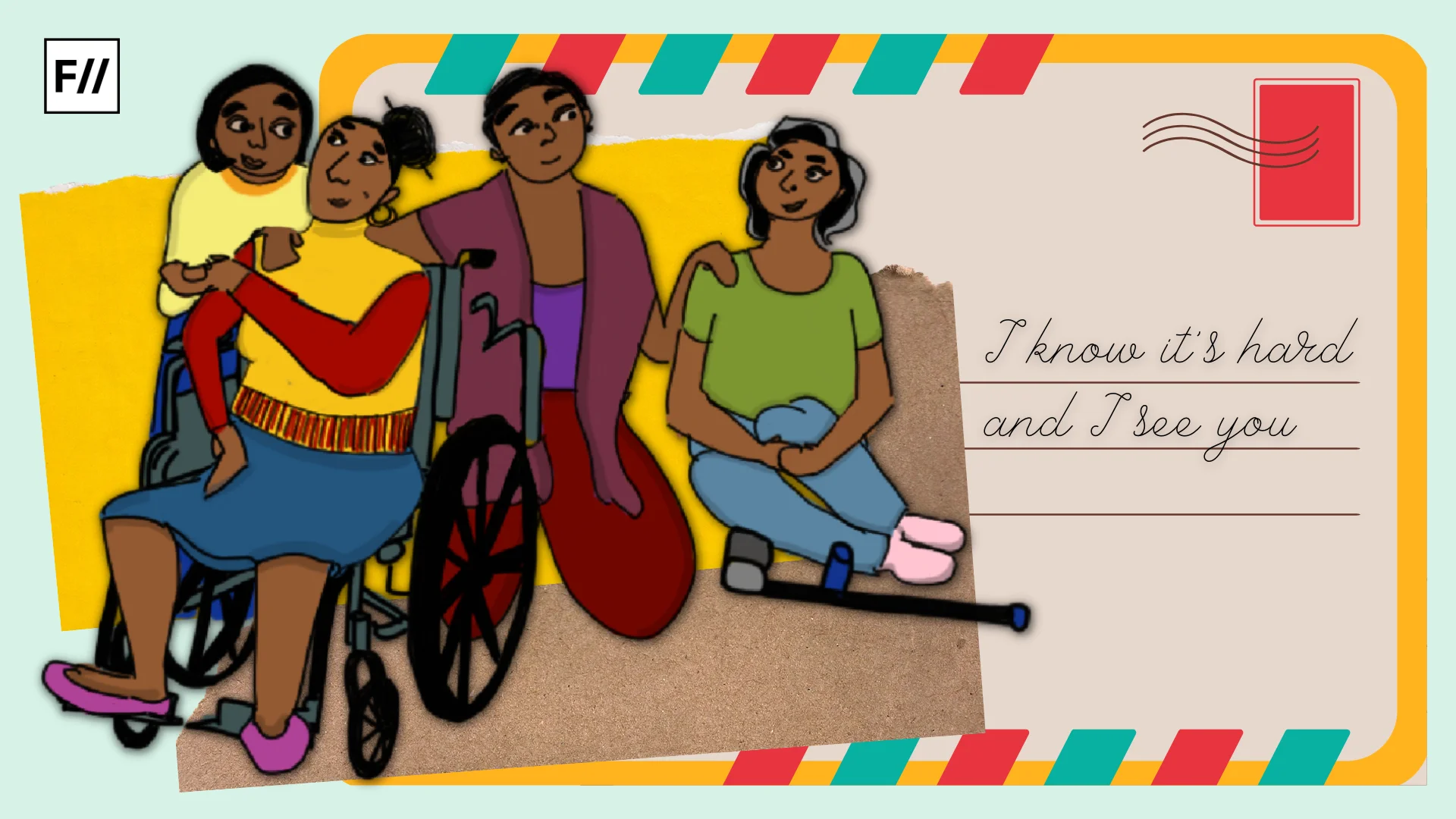TW: Details of rape
On June 23, Jayaraj and Bennix’s friends and family were informed that they had succumbed to injuries at the Kovilpatti Government Hospital, over a 100 kilometres from their town of residence, Sathankulam, in Tamil Nadu’s Thoothukudi district. Four days ago, on June 19, the father-son duo had been picked up by the police for allegedly keeping their mobile phone shop open past the lockdown curfew hours and taken to Kovilpatti. They were kept in police custody since.
What Happened To Jayaraj and Bennix?
There are two versions to the sequence and components of the events that took place. The FIR by the police states that when asked to close their shop on the 19th, “Jayaraj and Bennix sat on the ground and abused us verbally and rolled on the ground. In this, they suffered internal injuries.” It further states, “They told us that if we compelled them to leave, they will beat us and kill us.”
Eyewitness accounts, on the other hand, claim that the father and son were not picked up together, and were, in fact, taken away by the police on different days. They further claim that on June 18, the day before Jayaraj was taken into custody, there was an altercation between them and the police, which later caused the police to arrest Jayaraj and Bennix on fabricated charges. It is said that they were beaten up for hours by multiple policemen at the station. Bennix’s friends claim that they had heard the words “how dare you speak against the police” being shouted inside. There are also claims that they were assaulted so much that their blood-drenched lungis had to be changed six times. Bennix’s sister Percy claimed that he had been sexually assaulted by insertion of steel batons in his anus.
Suchitra Karthik Kumar, a radio jockey whose video describing the details of the assault that Jayaraj and Bennix faced at the hands of the police got international attention, stated that the police beat the father-son duo in their private parts with sticks, following which they bled acutely. Eyewitnesses who had seen the bodies of Jayaraj and Bennix also stated that their genital regions were visibly mutilated.
Also read: Unnamed George Floyds Of India—The Episodic Police Brutality In 2019-20
Police Brutality in India
Police brutality is abundantly common in India. In 2019 alone, a total of 1,731 custodial deaths took place – averaging almost 5 a day. It is not just abundantly common, it is also largely normalised and even glorified. Movies like Singham, Kaakka Kaakka, Rowdy Rathore, Chulbul Pandey, and a plethora of others make heroes out of policemen who commit police brutality in the name of extra judicial justice and fake encounter killings. When the alleged culprits in the recent rape and murder of a woman in Telangana were murdered in a fake encounter killing, the nation rejoiced.
Movies like Singham, Kaakka Kaakka, Rowdy Rathore, Chulbul Pandey, and a plethora of others make heroes out of policemen who commit police brutality in the name of extra judicial justice and fake encounter killings . When the alleged culprits in the recent rape and murder of a woman in Telangana were murdered in a fake encounter killing, the nation rejoiced.
Hence, police brutality goes either largely unnoticed or is condoned because our system advocates punishment as justice. Even the fact that Jayaraj and Bennix’s case has garnered as much attention as it has, seems to be due to the extremely graphic nature of the assault and more importantly, due to the current global movement against police brutality following George Floyd’s murder. An even less noticed reality of police brutality happens to be sexual violence, especially towards men.
Sex, Power and The State
Security forces in Kashmir and the North-East AFSPA-enforced areas sexually assault male civilians and prisoners, and so do armies around the world. Rape is a common weapon of war. But it does not take a war for ‘security’ officials of any kind to use rape as a means to humiliate, dominate, and control. It further explains the truth that the police system was not established to protect citizens; they were established to maintain order in favour of the ruling classes and instill fear in the rest, which is why the victims are always people with institutionally less power. There are several instances of police committing sexual assault but they go unreported for a multitude of reasons. Sexual assault against men, in particular, goes heartbreakingly disregarded.
Sex is inextricably linked with power, like most things. There is no act of sex that does not involve power structures. As long as it is fully and freely consensual, the power structures do not harm. But when it comes to rape, which is defined by its absence of consent, power tends to become an ostentatious, evil presence. Rape/sexual assault, though it may be motivated by desire, is committed through the ownership of relatively more power (physical, political, or emotional) by the perpetrator. Here, power is merely an enabler, not a motivator. Yet, in many situations, sexual assault is committed to express and reinforce power: it is motivated by it. Sexual abuse by sovereign State officials, such as the police, tends to largely take the latter form, especially when committed against men.
When it comes to rape, which is defined by its absence of consent, power tends to become an ostentatious, evil presence. Rape/sexual assault, though it may be motivated by desire, is committed through the ownership of relatively more power (physical, political, or emotional) by the perpetrator.
And hence, juxtaposing the “How dare you speak against the police” – what Bennix’s friends overheard the police as saying with the eye-witness accounts of the sexual assault inflicted on Jayaraj and Bennix – puts the power equation into perspective.
The aforementioned desire to express and reinforce power is essentially a desire to dominate. Dominance is a trait fundamental to toxic/conventional masulinity and the police are inherently a masculine establishment – not merely in their gender composition, but as a system.
Also read: On Najeeb’s Protest And Police Brutality: Protector or Violator?
Who are the Victims of Hegemonic Heteromasculinity?
Jayaraj and Bennix are victims of hegemonic heteromasculinity. It is hegemonic because it was the police (tools of the State) attacking common men. It is heteronormative because anal penetration was done to humiliate them in a homophobic sense, because it is considered less masculine and therefore shameful for a man’s body to have been the site of homosexuality in any way, whether consensual or not. Finally, it is masculine because of the concept of dominance touched upon earlier. They wanted to show Jayaraj and Bennix their place, they wanted to show them that they were not to be questioned (hence the many shouts of ‘how dare you speak against the police’); they wanted to show them that there is a price to disobedience, that they were more powerful than them. In other words, it was a show of dominance.
Hegemonic heteromasculinity is thus something that has the potential to victimise the majority of the population. It victimises women. It victimises LBGTQI+ individuals. It victimised Jayaraj and Bennix as part of the common male population with not much individual political power. Needless to say, patriarchy – of which hegemonic heteromasculinity is an instrument – victimises men just as well.
The answer to this issue of police brutality, and many others, is an overhaul of every system around the world that is based in the perpetuation of oppression. The police abolition movement gaining momentum in the United States is something to celebrate. More significantly, it helps everyone to aspire and work towards a world that is inclusive, safe and conducive to the flourishing of the most vulnerable individual – if not out of the goodness of our hearts, at least because such a world would naturally be freer for each of us in one way or the other.
Featured Image Source: Feminism In India
About the author(s)
Hamsadhwani is a law student and anti-caste socialist feminist. Abolish the conditions that produce the prison.





I was wondering why you guys didn’t pick up this story considering the victim wasn’t a Hindu!
Yes, the the Santhankulam incident is an example of police brutality…but we need to understand the following inner issues which led to such incident:
1.Was it a continuity of a clash between the police & the father son duo .
2.The pressure on the police to maintain Law& Order with insufficient strength (the police -public ratio is less than1:1000), which is much better in countries in Europian, American, Australian continents, etc.
3.The mental & physical health condition of police men due to poor working conditions, poor attention they could give to their families, poor remuneration, etc
4.Making reforms in the century old Police Manual or implementing recommendations of various committees.
5.Improper selection methods in Police, whereby most of the personnel in all ranks join for a job sake and not as a passion..as a police men essengially needs investigation instinct, patience, compassion, etc it’s not just a job that any one can take up, because it needs lot of sacrifice.
…there are many such issues which need to address for a better policing..
Agree with NMM. Also, I dosent find anything connected to sexuality in the events, whatever lead to the tragic life loss of the duo, in this case.